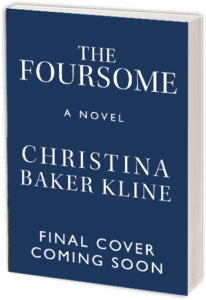Sheila Kohler, author of the new novel Becoming Jane Eyre, offers a nuanced answer to this perennial question:
 Shortly after the publication of my first novel, The Perfect Place, my husband and I were invited to dinner by friends. I can still see us sitting somewhat awkwardly side by side while our hostess, a book critic, quizzed us about the new book. The book, you need to know, is narrated by a cold, detached woman who moves through her isolated life observing rather than feeling. It becomes increasingly clear that she is not entirely innocent of a violent crime that has been committed.
Shortly after the publication of my first novel, The Perfect Place, my husband and I were invited to dinner by friends. I can still see us sitting somewhat awkwardly side by side while our hostess, a book critic, quizzed us about the new book. The book, you need to know, is narrated by a cold, detached woman who moves through her isolated life observing rather than feeling. It becomes increasingly clear that she is not entirely innocent of a violent crime that has been committed.
Looking at us a little askance, our hostess asked, “But do tell me, I’m dying to know, how much of the book is true?” My husband and I both answered the question immediately and at once: he said, “Every word of it!” and I said, “Not one word!”
In a way we were both right. Though my character seemed very far from me—indeed I thought of the aloof, narcissistic woman as my opposite – no doubt she reflected facets of my hidden thoughts and feelings which I was able to express thus disguised unto myself.
This question which always fascinates readers, “How much is true?” continues to come up more than twenty years later, though I have now published ten books and could hardly have lived all the adventures of my many characters! I am even more frequently asked this because I have now turned from my own life, which was the basis of much of my earlier work, to the lives of others. For many years I wrote repeatedly and in many different forms about the early and tragic death of a beloved sister who was, I believe, murdered, though her husband, himself, who was driving the car, survived and was never accused when my sister died in the accident. This theme, of lost girls, comes into so many of my early books.
Recently, I have written about other women, famous and not so famous. In Bluebird or the Invention of Happiness I wrote of a relatively unknown eighteenth-century woman, the Marquise de la Tour du Pin, who left France during the Revolution and became a dairy farmer in the Albany area, and now with my latest book, Becoming Jane Eyre, I have turned to the well-known lives of the Brontes.
When one takes a real life, particularly one that is so well known to many readers, like the lives of the Brontes, and turns it into fiction, one has obviously to be careful not to alter the facts that are known, or not to alter them too much, but that leaves, of course, ground to cover. As Fritz von Hardenburg has said, “Novels arise out of the shortcomings of history.” There are so many things we do not know even about those nearest and dearest to us and of course we always make a selection. Real life is often too long, too complicated, and too boring for any book. In a way, when one takes a historical character that person acts as a sort of screen behind which one can both hide and onto which one can project so much that is true in one’s own life.
Believing I had left my own life behind, I found myself finding parts of it in Charlotte Bronte’s: the death of her sisters, of course; the sharing of her creative work with her sisters, which I have done so often with my daughters who write; the role of the teacher, which has been such an important role in my own life as well as my life as a student. Writing about the Brontes, tricking myself, in a way, into believing I was writing about someone else’s life, I was able to create a middle distance and to find myself in her story, as I hope many of my readers will find his or her own in my book.
Sheila Kohler is the author of seven novels: Becoming Jane Eyre; Bluebird or the Invention of Happiness; Crossways; Children of Pithiviers; Cracks; The House on R Street; and The Perfect Place. She has also written three books of short stories, Stories from Another World; One Girl; and Miracles in America. Her work has received an O. Henry Prize, the Open Voice prize, the Smart Family Foundation Prize, and the Willa Cather Prize. This essay, in a slightly different form, originally appeared in Penguin Group USA’s blog.












